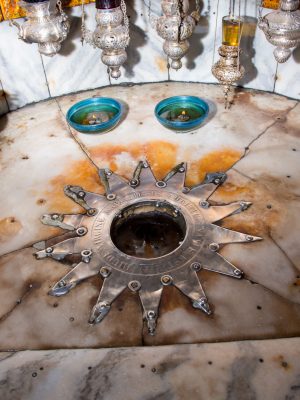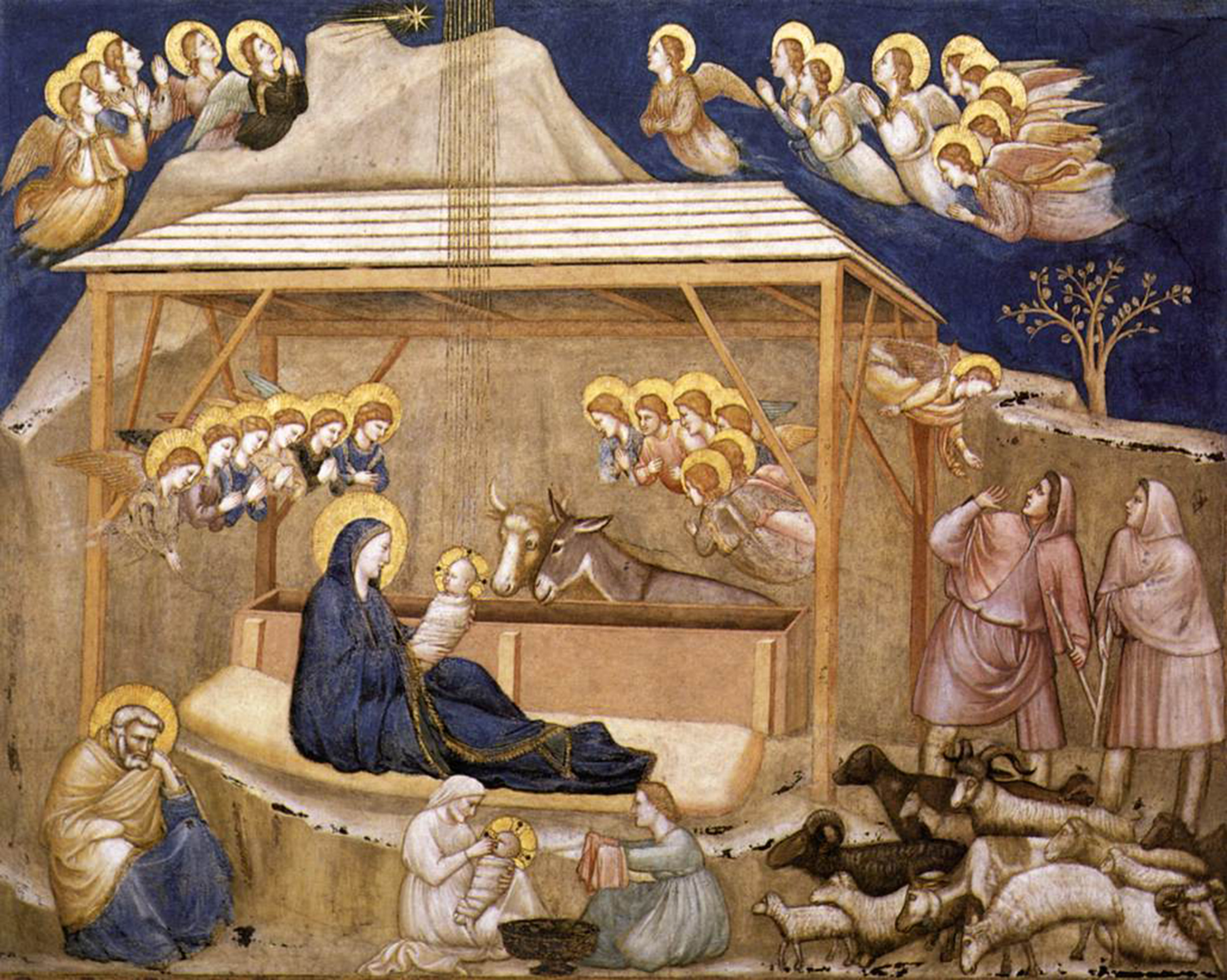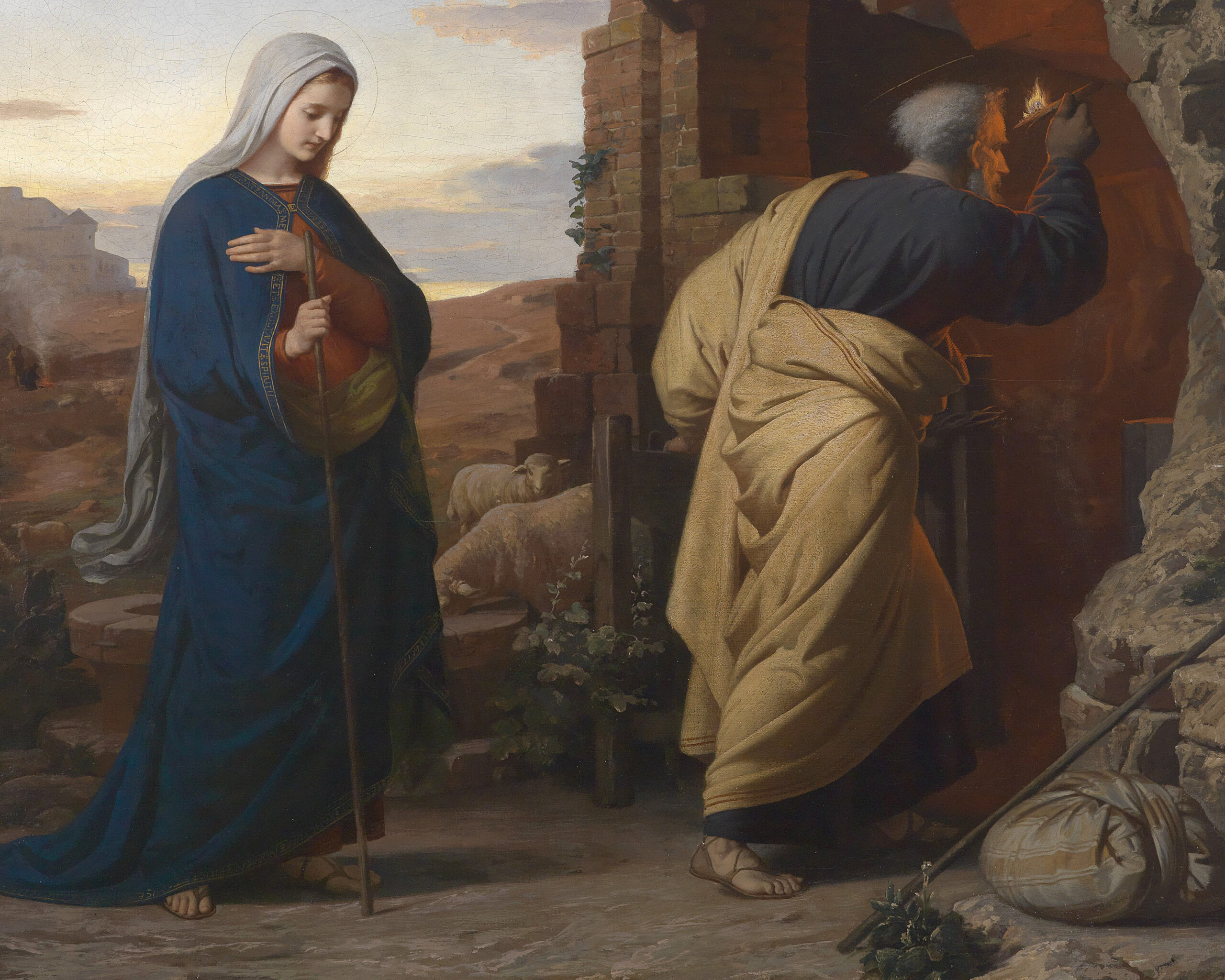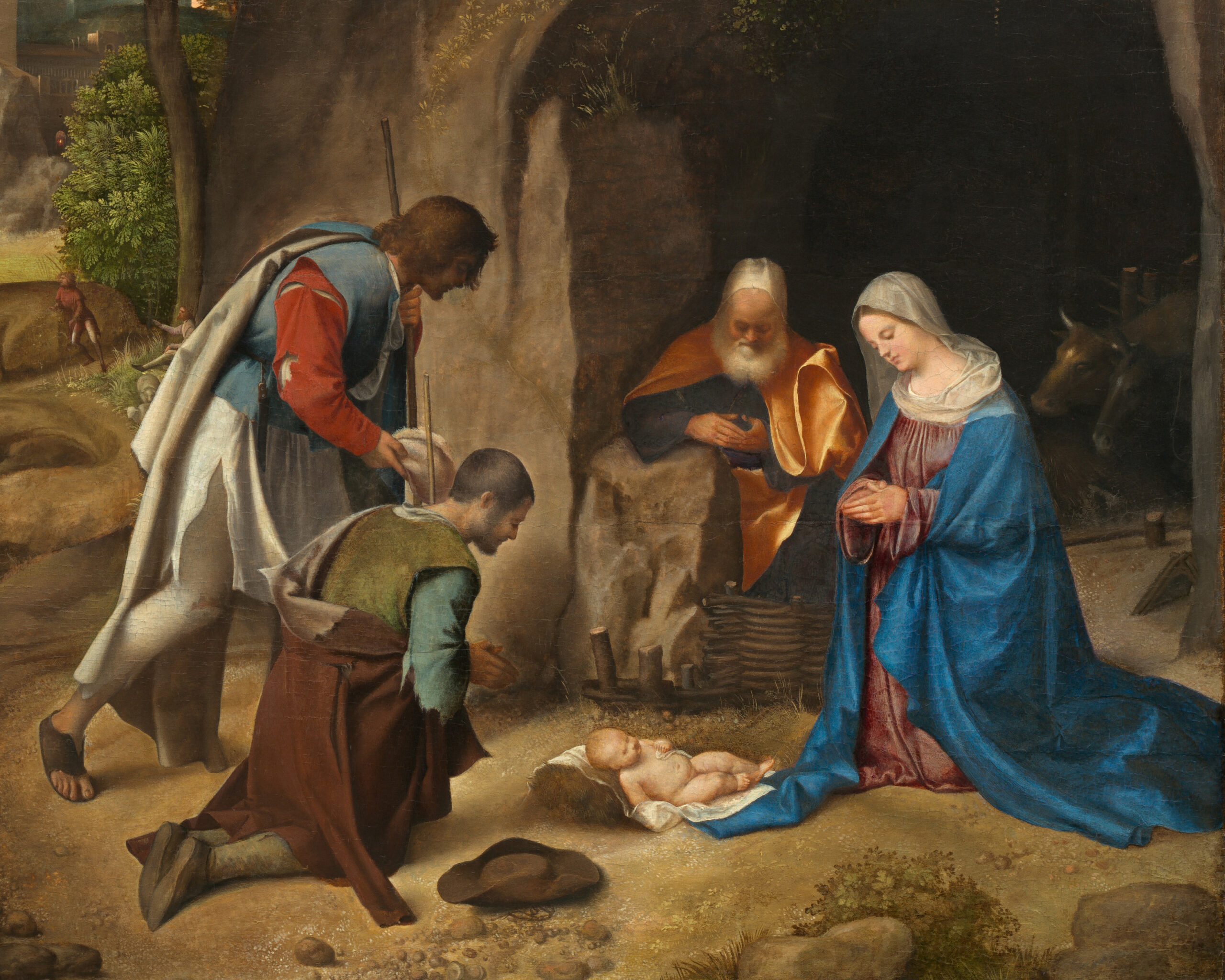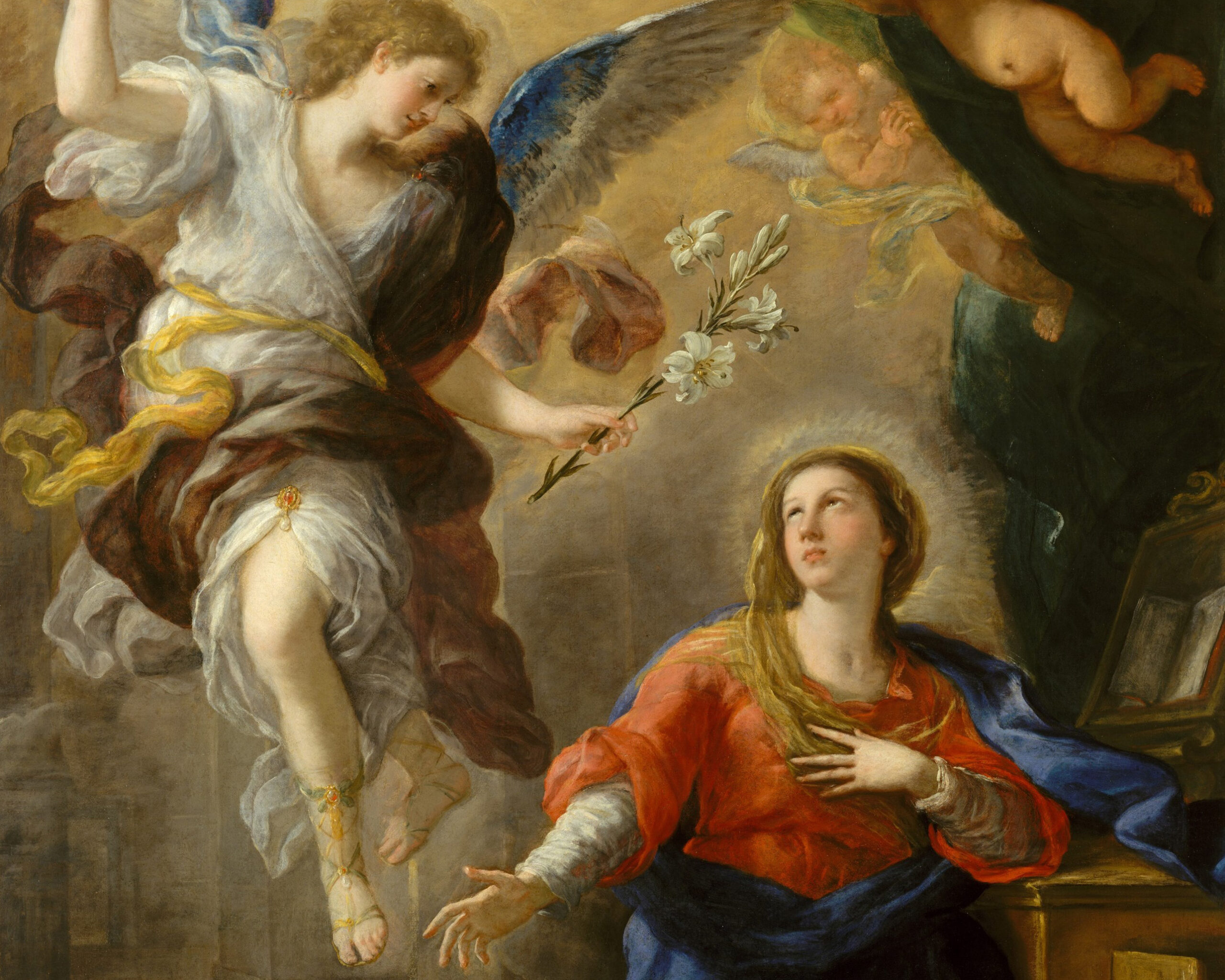“And thou, Bethlehem Ephrata [fruitful, honored], art a little one among the thousands of Juda: out of thee shall he come forth unto me that is to be the rule in Israel: and his going forth is from the beginning, from the days of eternity.”
-Mich. 5:2
Each year the Christmas story brings to the minds of all the Christians of the world the wondrous story of the Child in the manger nestled in the Judean hills of the town of Bethlehem.
The Christians in the Holy Land have a special first-had connection with the mystery of Christmas and they have much to share with those who have ears to listen.
Blessed is the pilgrim who has the privilege of visiting the Holy Land during the Christmas season, a time when pilgrims flock to experience the first Christmas in Bethlehem.
The pilgrim experience is unique, a once-in-a-lifetime opportunity to live and experience the birth of Christ and the theophany of pilgrimage, an encounter of metanoia, or conversion of heart.
Pilgrimage is a metaphor for life and what better time to be a pilgrim than during the Christmas season?
Holy Land Christians and the Real Bethlehem
The Christians in the Holy Land trace their Christian heritage and lineage back centuries in unbroken succession to the time of the Apostolic Age. A great many of them have relatives, or “cousins” in Bethlehem – with relations spread throughout the West Bank.
They are the first hearers of the real story of Christmas and share this with visitors who travel to the Holy Land in search of the real meaning of Christmas. No Christmas sermon can plead so eloquently as entering the lowly grotto and seeing the site where the Divine Babe slept amid the straw.
The local Christian community in Bethlehem gives sound advice to visiting pilgrims: “There is much in this mystery that calls for meditation rather than for explanation.” This is because there are eternal lessons to be learned from the story; each of us is an innkeeper who decides if there is room for Jesus (cf. Luke 2:7).
In the present day, pilgrims flock to visit the small hollow or grotto where Christ was born, entering first a church built over the site called the Basilica of the Nativity, the oldest church standing in the Holy Land, rebuilt by the Byzantine Emperor Justinian in the 500’s.
There they enter and walk down the nave of the church to the side of the sanctuary, and descend a steep staircase to pray inside the grotto of Bethlehem. Some small groups have Mass atop the altar fixed over the spot where tradition holds Christ was born.
At the bottom of the staircase in the grotto there is a semi-circular niche, with a large silver star on the marble floor that reads in Latin: Hic De Virgine Maria Iesus Christus Natus Est (Here, Jesus Christ was born of the Virgin Mary”), marking the place of Christ’s birth since it was put here in the year 1717.
Fifty-three decorated lamps dimly provide light, amid rich, heavy tapestry maintained by the Franciscan friars and changed throughout the seasons with various colors – white and gold for Christmas.
Pilgrims take their turns, however briefly, kneeling under the altar and kissing the star to offer a prayer of deep gratitude. Next they take a few steps back and tarry to delay their exit, taking in the moment and the sheer bliss of being in the cave where Christ was born.
Lastly, visitors exit up an opposite staircase, ushered by volunteers or employees who are not always without asperity (a harsh tone or manner) as they work to keep the crowd moving in haste so as to accommodate the many thousands that wait in line every day.
The faithful then wander through the upstairs Basilica, thinking holy thoughts after having seen this place – great indeed and long was the suspense. “For a Child is born to us” (Isa. 9:6).
Born in a Cave
The Son of God chose a lowly town for His birthplace, a stable and cave for His shelter, a manger for His crib. Heir to David’s throne, Christ was born here in David’s native hamlet.
For some foreign visitors, it is a surprise to learn Christ the Lord was born in a cave. But in those years many people lived in caves. In winter the animals provided warmth.
Thus writers as ancient as St. Justin and Origen, and Eusebius the historian, used Greek equivalents for “cave” when they described the place where Christ was born.
The cave captures the curios attention of all. It was actually part of a much larger underground labyrinth, a network of connecting passages that are open to the public, accessed through the attached church of St. Catherine.
At the time Christ was born, the cave may have been at the rear of a humble wooden structure that sheltered the beasts of burden, making the usual representation of the birthplace of Christ as a thatched stable not so inaccurate.
The event of the Incarnation was so monumental and life-changing that Christians from all over the world still flock every year to Bethlehem for Midnight Mass at the Church of St. Catherine, adjacent to the Basilica that holds the grotto.
Universal Tradition of Midnight Mass
The experience of Midnight Mass in Bethlehem is a once-in-a-lifetime experience and a wondrous sight to behold amid a throng of worshippers that gather from across the globe.
On this night while the altars of the Catholic world gleam with a myriad of lights and candles, the notes of joyful hymns and carols resound at St. Catherine’s in Bethlehem.
Here the Latin Patriarch of Jerusalem celebrates a Solemn Mass at Midnight for the local Christians and those visitors who are fortunate to attend (attendance is by ticket only).
At the conclusion of the Mass, under the midnight stars, there is a solemn procession of all the clergy and faithful as they walk together down to the grotto, where the Latin Patriarch places a life-sized statue of the Baby Jesus atop the spot where Christ was born.
The Gospel which relates the birth of Christ is sung and the statue of the Baby Jesus is then taken and placed a few steps further down in the lowest part of the grotto. This is where the manger was on the night when Christ was born, a bank of rock carved out in the lowest part of the cave that held the straw. This was the feeding trough for the beasts in which Mary placed her newborn Son.
The moment brings alive the magic of Christmas.
On that cold winter’s night, the shepherds heard the celestial hymn, “Glory to God in the highest!” and the Angel’s message telling them that the long-expected one had finally arrived: “Fear not, for behold, I bring you tidings of great joy; for this day is born to you a Savior.”
The mood is ethereal not only in Bethlehem, but throughout the world on Christmas Eve as the Christians of the world keep vigil, a word that signifies “a watching.” This practice goes back to the times of the early Church, when in ancient times the Christmas Vigil was celebrated with great solemnity.
At the stroke of midnight on Christmas Eve all over the world, the bells ring and the choirs intone the entrance hymns. At many parishes throughout the world Midnight Mass begins with a customary indoor procession that leads to the parish creche, where the statue of the baby Jesus is blessed and placed with reverence and awe in the parish manger.
Many of the faithful stay briefly after Mass and kneel in front of the Christmas crib, surrounded by the display of red poinsettias, wherein is depicted the mystery of Bethlehem. Christ is born!
While this tradition of Midnight Mass in some places has died out, in other places it is being revived. While not all families can attend due to various vicissitudes such as children’s bedtimes and early morning schedules, other families make the sacrifice and attend, a memory for their children that will never be forgotten.
Christmas is “Christ’s Mass” – the Mass offered in honor of the birth of the Savior. Very few people avert to the fact that this day so universally known is a feast of Catholic origin, an event in Bethlehem later taking its English-language name from the supreme act of Catholic worship.
Catholic writer Rev. John F. Sullivan explains the history: “This name seems to have come into use about the year 1038, and, in the early English language of that time, was written ‘Christes Maesse’; about a century later it had been modified to ‘Crist-messe’ – and, as the English tongue developed into its present form, it finally became” (cf. The Externals of the Catholic Church, 137).
St. Francis and the Christmas Creche
The custom of putting up a crib with figures in our churches and homes at Christmas is accredited to St. Francis of Assisi. It began in the Umbrian village of Assisi, where it is said he put together the world’s first manger scene with statues.
He created this devotional, displaying the statues amid strewn straw in a makeshift manger. The devotion was an immediate hit and the beloved tradition spread through Italy and beyond as a practice and came into vogue in other parts of the world.
The Franciscan order, which was founded by St. Francis in 1209, was later established by the saint in the Holy Land in 1217. Remarkably, the Franciscans have been present in the Holy Land almost uninterruptedly since that time. In 1309 the Franciscans also settled in Bethlehem.
Most of the Franciscans in the Holy Land came from Italy. They carried with them this beautiful tradition, with local Christian artisans in Bethlehem making souvenir mangers with hand-carved figurines made of olive wood, a tradition that has lasted until today.
The Christmas creche has become a universal sermon in and of itself, pondered in the imaginations of children and adults the world over. Inside Catholic churches a kneeler is often placed before the indoor Christmas scene, where the faithful are urged to kneel in silence and meditate upon so great a mystery.
Pilgrims who visit the Holy Land often choose to purchase in Bethlehem an heirloom manger scene with carven statues and tree ornaments made of olive wood from the Judean hills. The wood is impervious to rot and lasts forever, a symbol of the deep roots of the Christian religion in the land called holy.
Pilgrims are careful to only purchase from Christian shops in Bethlehem, a way of supporting the local Christian community – a remnant – every pilgrim doing their part to assist in strengthening the life-blood of the local community, a population that depends in a big way on the tourist trade.
Christmas is for All
All across the world many millions of people, even those who do not hold to the Christian religion, those to whom even a part of Christian culture has been given, look upon Christmas as the greatest and most joyful season of the year.
As the world’s Catholics gather for Christmas Masses of the day, they continue these Christmas traditions, preserving them in the home and in parish life.
At Mass Catholics receive Christ in the Blessed Eucharist, Him who is also mystically born again in the adorable Sacrifice of the Mass. At every Mass, Christ is made incarnate and reverently the faithful receive Him in the sacrament of His love.
Catholics are a fortunate minority. No multitudes welcomed Christ in Bethlehem; it was a small remnant. While the manger was His cradle, the cross was His dying bed, from both He preached a life-changing message of salvation. Have we ears to hear? Or will Christmas be for us just a day for gifts and merrymaking?
Let us be inspired by the Christians of the Holy Land. Let us learn from them and make a goal to get to church on Christmas and to one day visit Bethlehem. Perhaps during a future Christmas season, where the experience awaits every pilgrim, enkindling in all who visit a flame to turn from the ease and plenty of the season to the fullness of the season – finding the way home to the cave of Bethlehem and not lost or strayed or delayed along the way.
Christ is born. Come let us adore Him!


